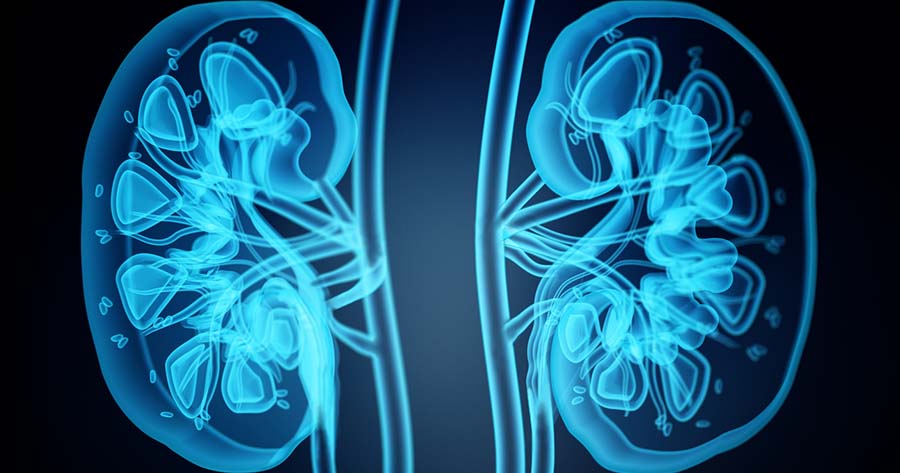Jeanne had a privileged, although not affluent, childhood. Brought up on the outskirts of Aberdeen within reach of the city amenities, she also enjoyed all the benefits of the surrounding countryside, which allowed for an active, tomboy-like existence. Her hobbies included swimming, diving, fishing, climbing, ballet, highland dancing, horse riding and painting. During the Second World War she even learned to plough a straight furrow with a tractor.
First symptoms
Two years after the end of the war, Jeanne developed a raging thirst and quickly lost weight. Suspecting a diagnosis of diabetes, her mother took her to the local GP as Jeanne’s maternal grandfather had been diagnosed in his twenties with identical symptoms. Her grandfather, however, died at the age of 28 – presumably because exogenous insulin was not yet available.
The laboratory blood test came back negative to glucose, and, as menstruations had ceased, the GP made a provisional diagnosis of pregnancy – Jeanne denied any possibility of this. Her symptoms persisted over the next year, with marked weight-loss despite a normal appetite, and eventually she was rushed into hospital. The year was 1948, and the diagnosis of diabetes now too obvious to miss.
Optimism versus pessimism
“It came as a huge relief to know what was the matter with me” recalls Jeanne, by then aged 18 years. With insulin freely available under the newly formed NHS, there was hope once more. Jeanne longed to return to her fully active lifestyle, but the doctors urged caution and were pessimistic about her future. She heard one doctor tell her mother that she was unlikely to live beyond the age of 25 years, and that she must accept restrictions on strenuous physical activity to avoid hypoglycaemia. Jeanne feels indebted to her GP for allaying some of her fears: “He told me diabetes is not a disease but a disorder that was controllable, and took me round a hospital ward to show me what really ill people looked like”.
Once home, Jeanne remembers that the diet was very strict: “everything was weighed and measured. I was allowed to eat unlimited greens but had to measure a quarter of a carrot! Sweet things were taboo. Carbohydrate intake had to be recorded, and meals were taken at very specific times”. She had to await daily visits from a nurse to give the injections because syringes were not available for home use, and it was considered that insulin should be administered professionally. Fortunately for a frustrated Jeanne, who longed to return to her previous level of independence, the philosophy of care was changing, alongside newly available syringes for home use (Woo et al 2009).
Wanting to be in control of her own life, Jeanne signed up for the revolutionary practice of giving her own injections – with what would be seen now as extremely primitive equipment. But to Jeanne the steel needles and temperamental glass syringes were essential to her precious daily independence.
Career
Jeanne commenced studies at the Aberdeen Art School, where she qualified 3 years later as a display artist. She had resumed all her former leisure activities, which included membership of the Cairngorm Climbing Club. There had been some opposition in the medical camp to this highly dangerous hobby, but by then Jeanne had become determined to lead a normal life and accepted no such restrictions. Work soon took her to Dundee, where success led to her being head-hunted down to London. Here she found unlimited outlets for her work, leading to business trips all over the country.
Jeanne tended not to tell people she had diabetes for two reasons. The first was the challenge of wanting to live a life that was normal and independent. Playing the diabetes card might tempt her to think of herself as disabled, which ran contrary to her view of living with the condition. The second reason was that she suspected it might worry potential employers, and count against her in the competitive job world.
The move to London in 1956 gave Jeanne an opportunity for a touch of late “teenage rebellion”, free from medical supervision. Eventually she was tracked down via the referral system with an appointment to see Arnold Bloom at Whittington Hospital. On presentation at his clinic he was horrified by her very high blood glucose levels, but the foundations were laid for a solid relationship, and Jeanne cherishes the fondest memories of him. “He had such a gentle spirit,” she remembers, “treating me with such respect and giving me unlimited encouragement. He was an absolute inspiration”. Dr Bloom suggested Jeanne introduce a second injection of insulin to improve 24-hour coverage.
Marriage and family
Boyfriends were not lacking, but they seemed peripheral to Jeanne’s hectic lifestyle, until David appeared on the scene. Caught up together in a theatre production, David’s fine baritone voice, directed towards her in a love song, won the day, and they married in 1964 when Jeanne was 32 years old.
At this time, people with type 1 diabetes were not encouraged to consider pregnancy. The perinatal mortality rate in the 1950s and 60s was estimated to be 25–30 per cent, significantly higher than in the general population (Johnstone et al, 2006). Arnold Bloom warned her that he was going against mainstream opinion by encouraging her to attempt pregnancy. The proviso was that both she and David had to accept her admission to hospital 8 weeks before full term. David remembers they were told that this was because, “blood sugars needed careful regulation as they usually become uncontrollable after 5 months and would affect the fetus”.
During Jeanne’s first pregnancy her obstetrician pulled up at the kerb beside her as she was walking back from the swimming pool. On discovering that she had actually been swimming, he instructed her to report for admission the following day. David understood the rationale to be: “strenuous exercise could cause a miscarriage and she needed to be still”.
Subsequently, Jeanne and David had three healthy children born between 1966 and 1970, all by elective caesarian section. Two of the sections were at 36 weeks, resulting in healthy babies of 5lbs 6oz and 7lbs. Both did well. However, a section was performed at 32 weeks with the second pregnancy, due to concern over lack of fetal movement. This resulted in a 5lb baby girl who was predicted not to survive. On her postoperative night Jeanne says she “struggled out of bed, knelt down and prayed. I was then able to reassure the doctors and midwives that the baby was going to be fine – which she was.”
Monitoring and management
Although Jeanne had always carried out whatever form of home blood glucose monitoring was available from the 1950s onward, she had relied on symptoms rather than results in the earlier days. Improvements in the immediacy and accuracy of home blood glucose testing have helped with calculating insulin dose against carbohydrates. This is essential now as hypoglycaemia warning signs have become less reliable as she has gotten older. “David has been wonderful throughout,” says Jeanne, while David’s response is that, “Jeanne has coped amazingly with this for over 60 years. I try to support her as much as I can but its not always easy – like this morning when she forgot she’d already taken her insulin and so gave herself a second dose!”
When asked about complications of diabetes, Jeanne is not aware of anything significant. Although she has background retinopathy in both eyes, she has never required laser treatment. She undergoes annual medical reviews for complications, but is not aware of any other diabetes-related problems.
Conclusion
Medical opinion might vary on why Jeanne has arrived at this point in her life with little evidence of the major complications of diabetes to restrict her. Jeanne attributes it primarily to her faith. She also pays tribute to her loving and supportive parents in the early days, and the help provided over the years by a devoted husband. Both Jeanne and David are full of praise for the care offered by the multidisciplinary diabetes team, specifically praising the support of the DSN and dietitian.
On the subject of eating she says: “I had such good food even during the war, maybe because of it. There was always locally grown produce on the outskirts of Aberdeen, and later, in London, there were street barrows full of fresh fruit and vegetables.” Although her hobbies no longer include rock climbing and diving, Jeanne has remained active and independent. This story is a huge tribute to a very special person who has overcome all her difficulties with great courage.





NHS England to allow weight-loss injections for prioritised patient cohorts from late June.
5 Apr 2025